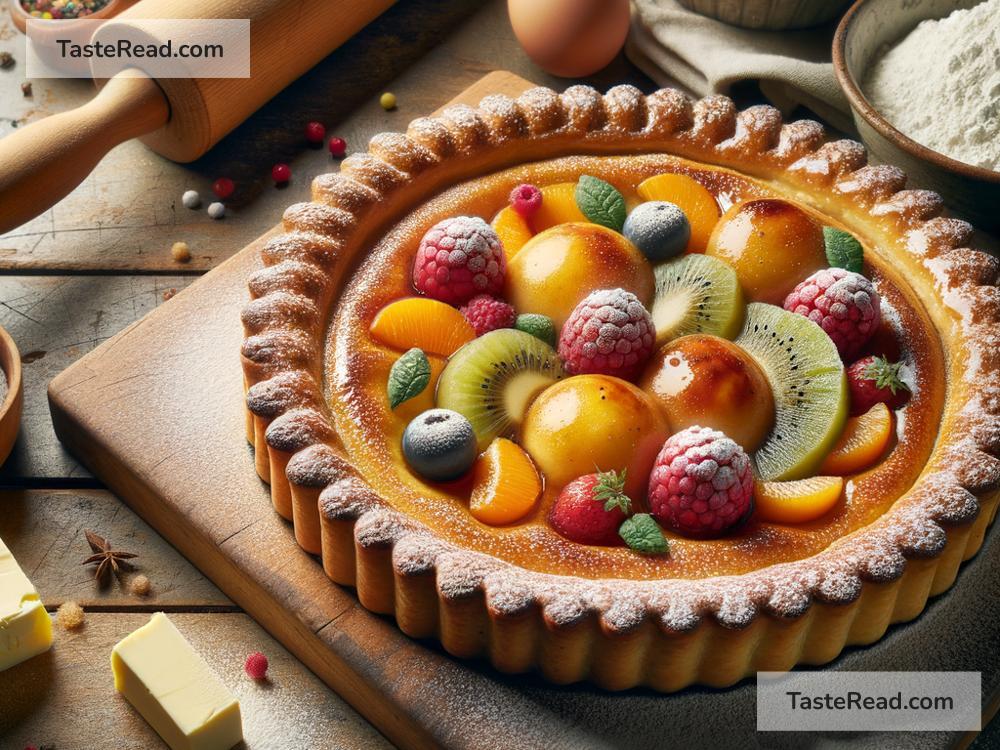The Origins of the French Tart: A Sweet and Savory Story
French cuisine is famous for its delicate flavors, artful presentations, and rich history. Among its many well-loved dishes, the humble tart stands out as an icon of French baking mastery. Whether sweet or savory, the tart is a versatile dish that has evolved over centuries to become a staple of French cuisine. But where did it come from, and how did it achieve its fame? Let’s dive into the fascinating origins of the French tart.
What is a Tart?
To understand its history, let’s first define what a tart is. A tart is a dish made with a pastry crust that forms a shallow container for fillings like fruits, custards, meats, or vegetables. Tarts can be either sweet or savory, and they’re baked without a top layer, unlike pies. The result is a delectable combination of buttery crust and flavorful filling.
Early Beginnings: The Influence of Ancient Civilizations
The tart’s history can be traced back thousands of years to ancient civilizations like the Egyptians, Greeks, and Romans. While they didn’t have exactly what we call a tart today, these cultures baked early versions of flat pastries that held various toppings. The Egyptians made bread-like dough to hold toppings such as honey and nuts, while the Romans used unleavened pastry filled mainly with savory ingredients like meat and cheese.
These early “tart-like” dishes gained popularity across Europe, and as baking techniques evolved, so did the recipes. Pastry crusts became more refined through the development of rolling, layering, and butter incorporation, paving the way for the French tart as we know it today.
Medieval Europe: The Rise of Pastry
During the Middle Ages in Europe, pastry-making became more sophisticated. This period saw the invention of shortcrust pastry, which is a key ingredient in many tarts. Shortcrust pastry is made using flour, butter, and water, and its crumbly texture makes it perfect for holding a variety of fillings.
At this time, tarts were primarily savory and often eaten as part of feasts held by the wealthy. They were filled with local ingredients, such as meats, fish, and root vegetables. Sweet tarts were less common, as sugar was a luxury item that only the nobility could afford. Still, bakers occasionally sweetened pastries using honey or fruit preserves.
A French Touch: Renaissance Innovation
The Renaissance was a time of great change across Europe, and France began to develop its reputation as a culinary powerhouse. During this era, French chefs refined many of the techniques used to make tarts, placing greater emphasis on aesthetics and flavor. The Renaissance also ushered in more frequent use of sugar, thanks to expanded trade routes that brought this precious ingredient to Europe.
This led to the popularity of sweet tarts, which featured fruits like apples, pears, cherries, and apricots. Creamy custard fillings also emerged during this time, giving rise to the iconic tarte aux fruits (fruit tart) and tarte au citron (lemon tart).
Savory tarts continued to thrive as well, fueled by France’s rich agricultural traditions. French cooks often used local cheeses, meats, and herbs as fillings. One classic savory French tart is the quiche, which features eggs, cream, and various ingredients baked into a pastry crust. Quiche Lorraine, with bacon and cheese, is one of the best-known examples of this type of tart.
The Tart Becomes a French Classic
By the 17th and 18th centuries, tarts had firmly secured their place in French cuisine. Around this time, pâtissiers (specialized pastry chefs) emerged as respected artisans in France, creating elaborate and beautiful tarts for royal courts, wealthy patrons, and special celebrations. French royalty, including Marie Antoinette, famously indulged in sweet pastries, helping to boost their popularity.
Regional variations also contributed to the tart’s widespread appeal. In southern France, for example, bakers often incorporated Mediterranean ingredients like olives, anchovies, and tomatoes into savory tarts. Meanwhile, regions like Alsace and Lorraine became famous for their quiches.
The Tart Today: A Global Favorite
Today, the French tart is loved worldwide. French desserts like the tarte Tatin (an upside-down caramelized apple tart) are celebrated for their elegance and flavor. Modern pâtisseries around the globe sell beautifully crafted fruit tarts topped with glistening berries and whipped cream.
Savory tarts, too, remain a favorite. They are served as appetizers, main courses, or side dishes, showcasing simple yet delicious combinations of flavors. Quiche is especially popular and has become a versatile dish that allows cooks to experiment with ingredients like spinach, mushrooms, or smoked salmon.
Why We Love French Tarts
The beauty of the French tart lies in its simplicity and versatility. It can be rustic or refined, sweet or savory, and made with everyday ingredients or luxurious ones. Whether you’re biting into a buttery crust filled with tangy lemon custard or enjoying a slice of hearty quiche, the tart reflects France’s love for good food and creativity.
Through centuries of innovation, the French have transformed this humble dish into an art form. Today, the tart is more than just a pastry—it is a delicious piece of history that connects us to the rich traditions of French cuisine.
So next time you enjoy a French tart, take a moment to savor its flavors and appreciate the long journey it took to get to your plate. Bon appétit!


